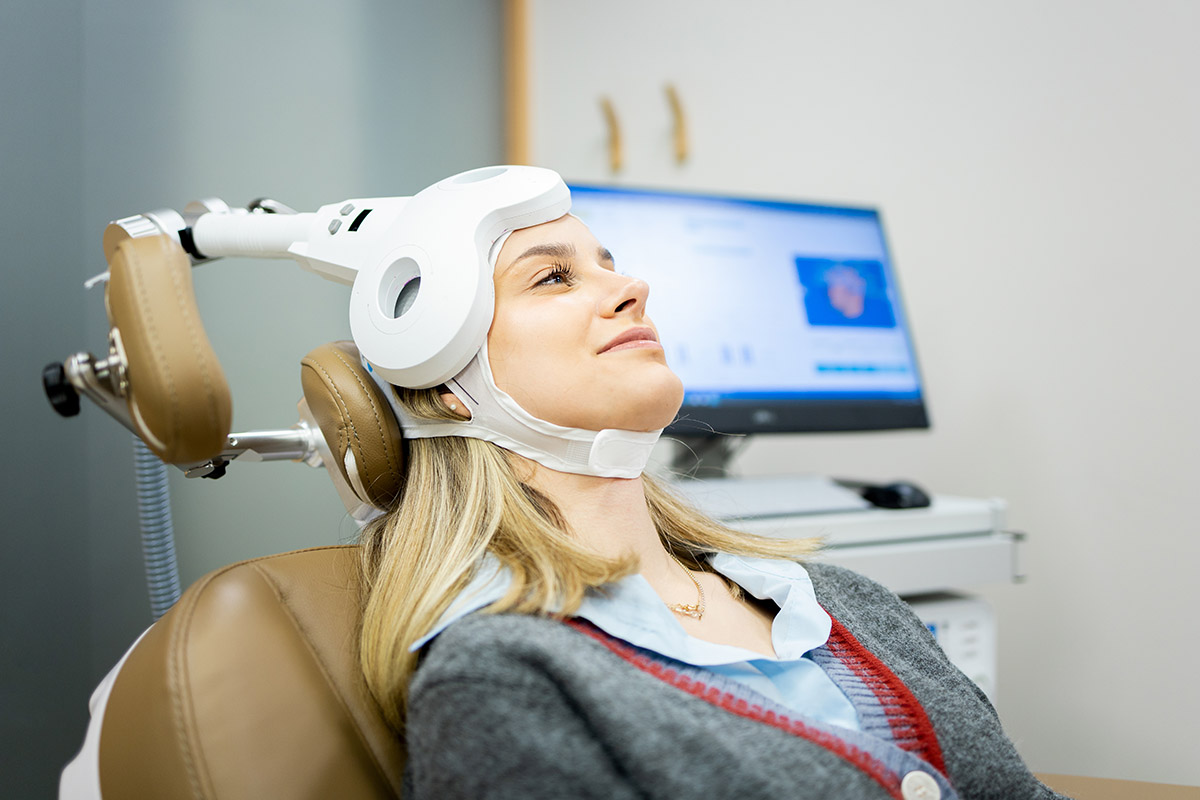Picture a professional sitting in a Zoom meeting, eyes focused, listening intently. Now imagine a pen moving so fast it looks like a metronome caught in a battle of relentless note-taking. That was me the first time I learned about Transcranial Magnetic Stimulation. TMS.
I’m not an inventor. I wish I were, but my evidence-based DNA doesn’t allow it. What I am is an early adopter, someone who leans into innovation when it has the science to back it up. That’s why I integrate new modalities into our work at Women’s Recovery. As I listened to the trainer break down the science behind TMS, step by step, I knew this was a treatment worth paying attention to.
Medical technology has made impressive strides in mental health care, and TMS is one of its most groundbreaking advancements. This non-invasive therapy uses magnetic pulses to stimulate underactive regions of the brain—most commonly the dorsolateral prefrontal cortex, which plays a critical role in mood regulation. Depression is not just sadness or a loss of motivation. It is a neurological disorder that alters brain function, disrupts the way neurons communicate, and limits the brain’s ability to regulate emotions, focus, and decision-making.
Unlike traditional treatments like medication, which work systemically and affect the entire brain, TMS precisely targets the areas that need activation. It promotes neuroplasticity, encouraging the brain to create new neural connections and restore lost function. It gets the brain unstuck.
If you love the deep science dive, go for it—the research is there, the benefits are clear, and the risks are minimal. TMS is best known for treating major depressive disorder (MDD) and treatment-resistant depression. It offers relief for those who have cycled through medications, therapy, lifestyle changes, and every self-help book imaginable, only to find themselves back in the same dark place. And unlike many interventions, it doesn’t require a lifetime of medication adjustments or invasive procedures.
But science alone doesn’t capture the full story. Depression isn’t just a clinical diagnosis—it’s a lived experience. It’s the weight that presses down on those who suffer, the exhaustion that makes even small tasks feel insurmountable.
Picture that same attentive face in a therapy session, hearing the all-too-familiar echoes of suffering: “I thought I was going to die from my depression. I can’t get over this. It doesn’t matter how hard I try. I don’t want to take another pill.” These words are spoken in quiet offices, between desperate family members trying to understand, and in the minds of those fighting against the relentless pull of depression.
Depression hijacks hope, making it impossible to believe healing is available. It creates a paralysis where every solution feels out of reach. It convinces people they are the exception to every success story. It drains energy, making even the smallest effort feel monumental.
For those battling depression, the goal isn’t immediate transformation—it’s just a spark. Some small, manageable action that signals movement toward healing. TMS provides that. When someone consistently shows up for treatment, wearing an unusual but effective piece of headgear, something shifts. It’s not just about what the machine is doing; it’s about what the person is doing. They are taking an action toward healing. As the sessions continue, the brain begins to wake up, producing energy, reactivating pathways, and making the road forward visible.
At first, the progress is subtle, almost imperceptible. But then, it adds up. The fog starts to lift.
And then, you hear it: “For the first time in years, I don’t feel like a walking heartbreak.”
That moment is restoration. Not a temporary boost in mood, but a physiological, emotional, and psychological return to self.
When evaluating treatment options, the prognosis always comes down to willingness and capability. It’s a question we ask often at Women’s Recovery: Are you ready? Are you willing? Are you able? For many, the answer is complicated. The very nature of depression makes treatment feel impossible. But TMS has positioned itself as a solution that works with the person, not against them. The science is strong, the risks are low, and all it asks of the client is a small step forward.
So picture that same provider, sitting across from a client who, for the first time in years, feels unstuck. It doesn’t require blind faith. It doesn’t require energy they don’t have. It just requires them to show up.
And the truth is simple: It works.


